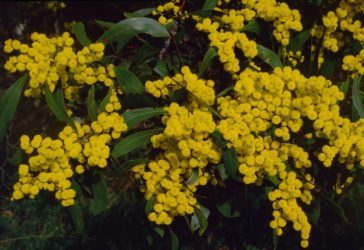Genomics for Australian Plants Framework Data Initiative
Australia’s unique flora is the result of millions of years of isolated evolution prior to collision with the Asian continent and subsequent floral exchange. There is an astounding 24,000 species of native vascular plants, many of which are found nowhere else in the world. These plants have evolved highly diverse traits to thrive in the continent’s varied and often harsh climates and provide a unique landscape to the region.
Australian native plants support many important sectors of the Australian economy, including agriculture, forestry, fisheries, aquaculture and tourism. For the local Indigenous communities, the land and its resources have underpinned Indigenous history, innovation, culture, spirituality and economics for tens of thousands of years. Genomic characterisation of Australia’s flora will assist in the management and conservation of native flora, which has suffered from various degrees of disturbances since European settlement.
Genomic approaches offer the possibility of unlocking the enormous information in nuclear genomes for plant evolutionary and conservation studies to significantly improve conservation management decisions. There are currently 225 plants genomes, which represents 0.06% of an estimated 403,000 genomes available that had been assembled across the plant tree of life. Novel traits and biochemical pathways identified through genomic analysis may be harnessed for applications such as biofuel, drug and crop breeding developments.
The central resource for this initiative will be derived from herbaria and botanic gardens (living collections) around the country. The addition of genome sequencing data would add significant value to the collections and contribute to the development of new methods and capabilities which can be adopted more extensively in the longer term.
The Bioplatforms Genomics for Australian Plants Framework Data Initiative aims to:
- Sequence and assemble representative Australian plant genomes across across the plant tree of life to enable better conservation, utilisation and understanding of Australia’s unique plant diversity;
- Build genomic capacity across Australian Botanic Gardens and Herbaria to create networks collaborating in the collection, management, dissemination and application of genomic data for Australian plants;
- Provide tools to enable genetic data to be used to identify and classify biodiversity at a range of scales and to use these tools to inform conservation management and enable better decision making.
This nationally-inclusive and collaborative initiative is led by researchers from the Australian State and National Herbaria and Botanic Gardens. Current consortium members include Australian National Herbarium, Australian Tropical Herbarium, Kings Park and Botanic Gardens Herbarium, Medicinal Plant Herbarium and Southern Cross Plant Science – Southern Cross University, NCW Beadle Herbarium – University of New England, Queensland Herbarium, Royal Botanic Garden Sydney, Royal Botanic Gardens Victoria, State Herbarium of South Australia, University of Melbourne Herbarium, Western Australia Herbarium, CSIRO, Department of Biodiversity, Conservation and Attractions Western Australia, La Trobe University, University of Adelaide, University of Melbourne, Australian National University, Western Sydney University, Government of Western Australia, TERN and Atlas of Living Australia.

